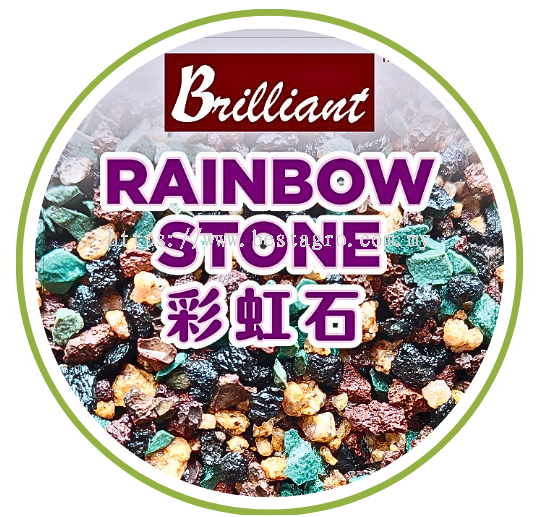1. What is Rainbow Stone?
Rainbow stone, also known as multicolored volcanic rock, is a unique growing medium celebrated for its aesthetic appeal and practical benefits. Formed from volcanic activity, rainbow stone is rich in minerals and features a range of vibrant colors. Its porous structure and mineral content make it an excellent choice for enhancing soil health and supporting plant growth.
2. Benefits of Using Rainbow Stone as a Growing Medium
Enhanced Drainage: Rainbow stone's porous nature allows for superior water drainage. This prevents waterlogging and root rot, ensuring that plants have well-drained soil and a healthy root environment.
Improved Soil Aeration: The air pockets within rainbow stone enhance soil aeration. Proper aeration is crucial for healthy root development, as it allows oxygen to reach the roots and supports overall plant vitality.
Nutrient-Rich: Rainbow stone contains various minerals, including potassium, calcium, and magnesium, which are essential for plant growth. These minerals are gradually released into the soil, providing a steady supply of nutrients to the plants.
pH Stabilization: Rainbow stone helps stabilize soil pH levels, making it suitable for a variety of plants. By maintaining a balanced pH, it ensures that nutrients are available for plant uptake.
Toxin Absorption: Rainbow stone has the ability to absorb and neutralize toxins and heavy metals in the soil. This contributes to a healthier growing environment and reduces the risk of plant stress.
2. How to Use Rainbow Stone in Gardening
Soil Amendment: Mix rainbow stone into garden soil to improve its structure and drainage. Adding about 10-15% rainbow stone to your soil can enhance aeration and nutrient retention.
Potting Mix: Create a balanced potting mix by combining rainbow stone with other ingredients such as peat moss, perlite, and compost. A typical mix might include 20-25% rainbow stone to ensure optimal moisture and nutrient levels.
Top Dressing: Use rainbow stone as a decorative and functional top dressing for potted plants and garden beds. It helps retain moisture, reduces soil erosion, and adds a colorful touch to your plant arrangements.
Hydroponics: Rainbow stone can be utilized in hydroponic systems as a stable growing medium. Its mineral content and drainage properties make it suitable for supporting hydroponic plants.
Lawn Care: Incorporate rainbow stone into lawn care routines to improve soil health and drainage. Spread a thin layer over the lawn to enhance soil structure and support robust grass growth.
4. Best Plants for Rainbow Stone
Vegetables: Rainbow stone is beneficial for vegetable gardens. Its drainage and nutrient release properties support the growth of tomatoes, peppers, cucumbers, and root vegetables.
Flowering Plants: Flowering plants such as orchids, roses, and marigolds thrive in rainbow stone-enhanced soil. The improved aeration and nutrient supply lead to more vibrant and healthier blooms.
Houseplants: Houseplants like succulents, ferns, and palms benefit from rainbow stone's balanced water retention and aeration. It provides a stable environment for indoor plant growth.
Fruit Trees: Fruit trees, including citrus, apple, and fig trees, can benefit from rainbow stone's soil structure and nutrient content. It promotes strong root systems and higher fruit yields.
Herbs: Herbs such as basil, thyme, and rosemary grow well in rainbow stone-amended soil. The consistent moisture and nutrient supply ensure robust growth and aromatic leaves.
5. Maintenance and Care
Watering Tips: Adjust your watering schedule when using rainbow stone, as its drainage properties may lead to quicker soil drying. Ensure thorough watering but avoid overwatering to prevent root issues.
Fertilization: While rainbow stone provides essential minerals, regular fertilization is still important. Use a balanced, slow-release fertilizer to supplement nutrient availability.
Monitoring Soil Conditions: Regularly check soil moisture and structure. Rainbow stone helps reduce compaction, but maintaining good soil structure is crucial for optimal plant health.


